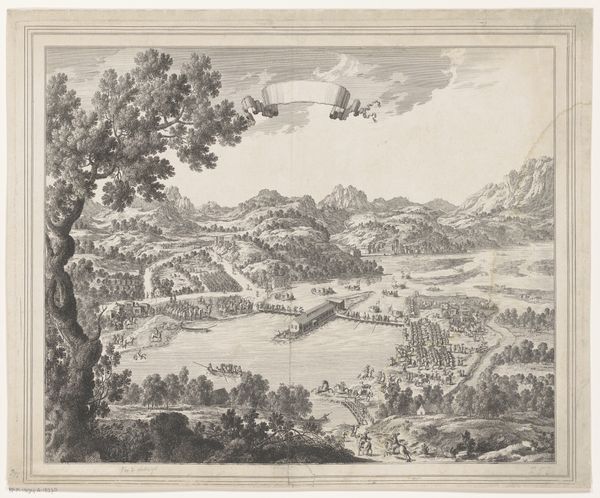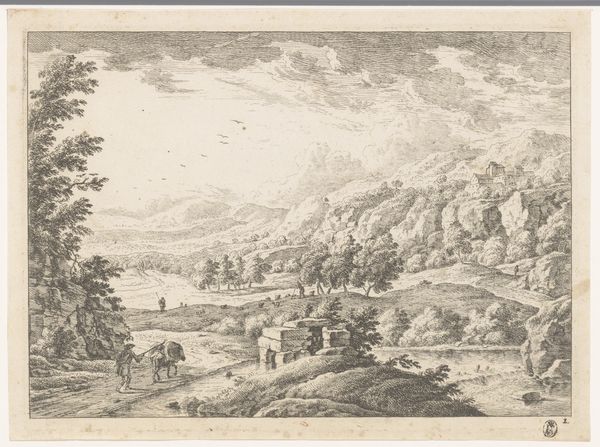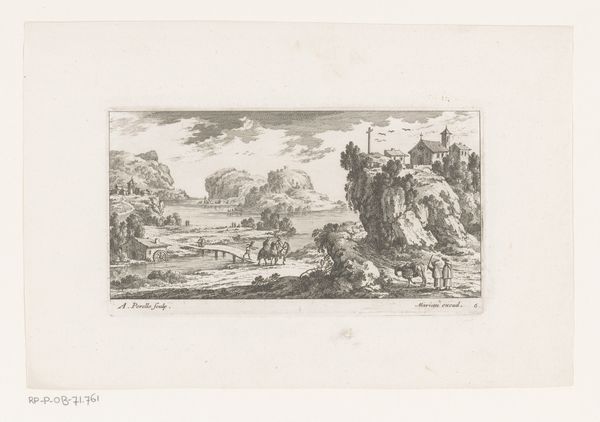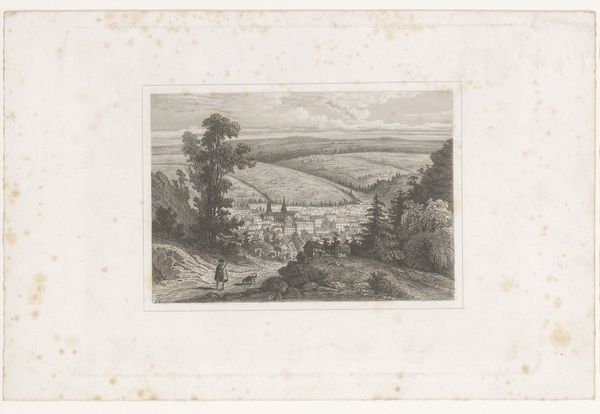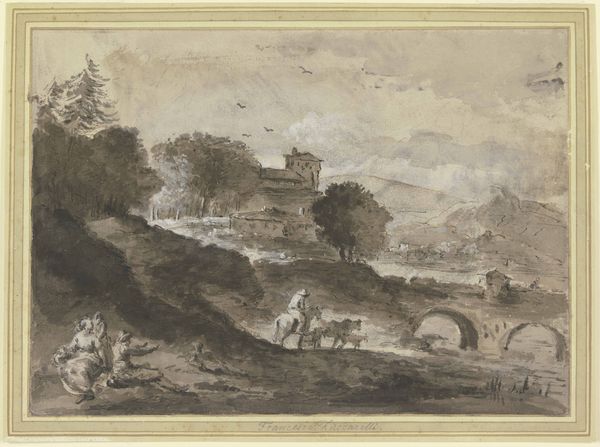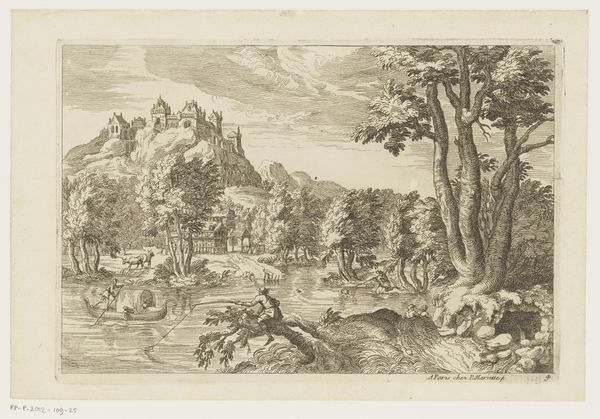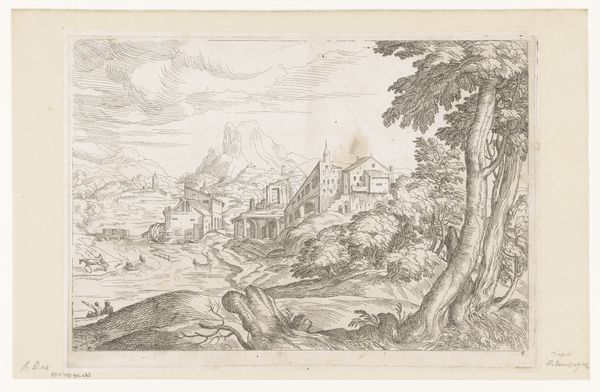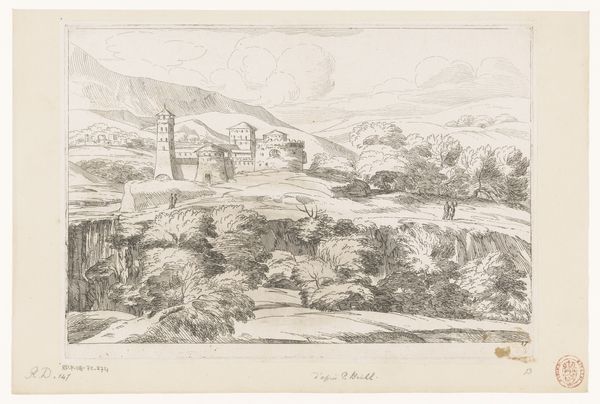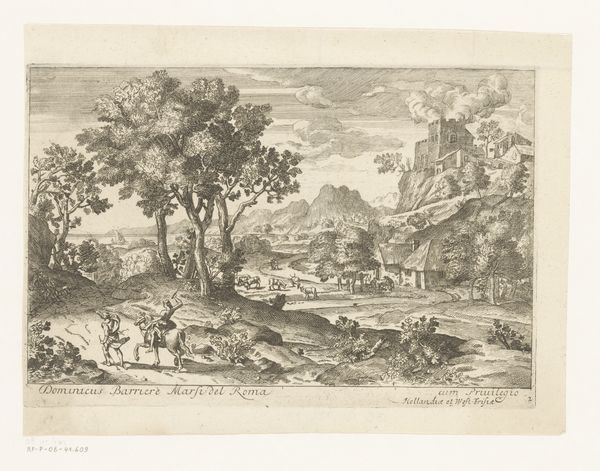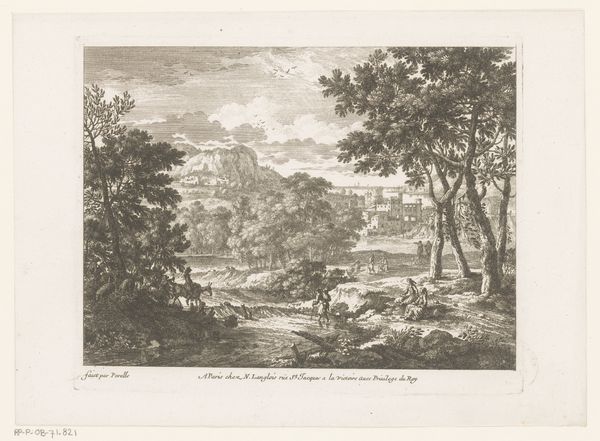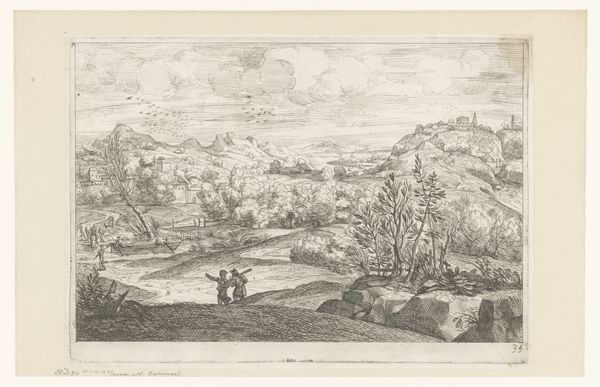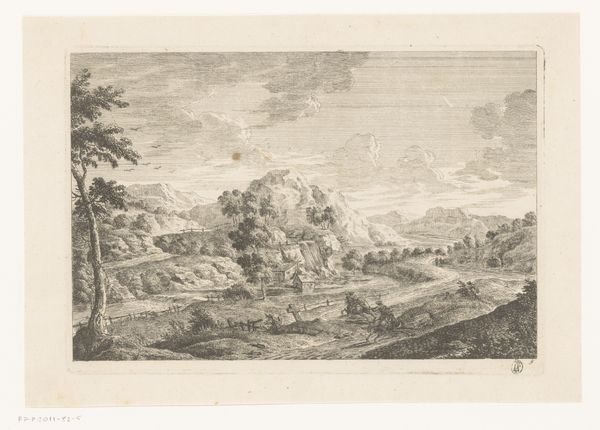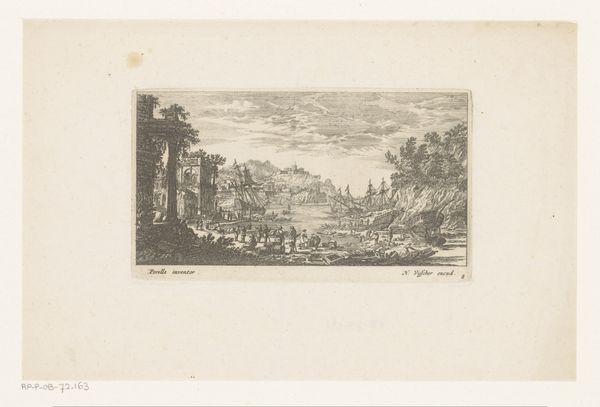
drawing, pencil
#
drawing
#
landscape
#
classical-realism
#
pencil
#
realism
Dimensions: height 199 mm, width 319 mm
Copyright: Rijks Museum: Open Domain
Editor: This is "Landschap," a landscape drawing from sometime between 1663 and 1726 by Lubienitzki Theodor. The subtle use of pencil is pretty striking. What structural elements stand out to you in this piece? Curator: The most immediate aspect is the division of space. Observe how the artist uses a foreground of densely rendered trees and rocks, a middle ground offering glimpses of cultivated fields, and a distant, ethereal mountain range. Editor: Yes, there’s a clear layering. How does this division affect the overall composition? Curator: The stratification guides the eye, certainly, from the immediate to the distant, creating depth and a sense of perspective. Notice the line quality; Lubienitzki's delicate pencil strokes and hatching create tonal variations that model the forms of the trees and landscape. These techniques underscore the texture and spatial recession in the picture plane. Editor: The textures are very subtle but quite effective! I'm curious about the absence of figures. Is that intentional? Curator: Perhaps. This omission emphasizes the grandeur and self-sufficiency of nature itself. It shifts the focus entirely onto the formal elements and the inherent qualities of the depicted environment. The artist is asking us to appreciate the landscape's structure rather than the narrative of human action within it. Editor: That's a good point; it reframes how you experience it. I appreciate the artist's focus on spatial arrangement and tonal range. Curator: Precisely. The inherent relationship of texture and value speak for themself. It allows us to consider the purely aesthetic qualities of line, shape, and composition.
Comments
No comments
Be the first to comment and join the conversation on the ultimate creative platform.
